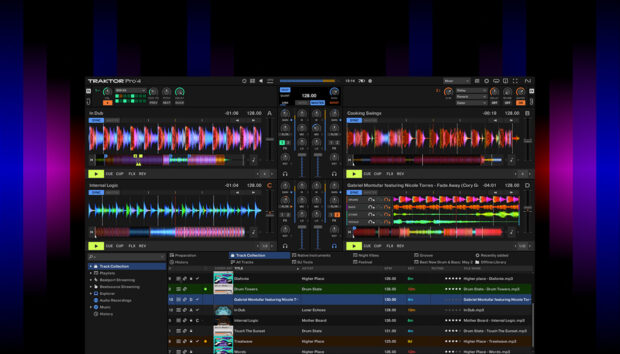
Speaking to Native Instruments, German producer and DJ Cio D’Or talks about her production ideology, and shares some of the tools and techniques she uses to achieve the cinematic sounds featured on her 2015 LP ‘all in all.’
According to Brian Eno, ambient music can accommodate many levels of listening attention without enforcing one in particular. “It must be as ignorable as it is interesting,” he says. It’s precisely this aspect of Cio D’Or’s productions — the ambiguity in what you’re actually hearing — that makes her music so exciting. In 2009, the Cologne-based artist, whose real name is Cio Dorbandt, released the album Die Faser. Labelled by Resident Advisor as a “totemic moment” for techno’s insurgence into the mainstream, the Prologue-released album came about at the start of period that saw wholly beat-driven techno releases from Abdullah Rashim, Mike Parker, and Dino Sabatini, as well as Voices From The Lake, and Cassegrain.
Dorbandt’s trademark sounds feature clicks, pings and chimes doused in reverb and delay. It’s these after-effects that play with parameters like reverb density and size, pre-delay, release-time, LFO and modulation that add to the smoky atmosphere of what lies beneath. “I am fascinated by using less sound, but I put a lot of work into single tones,” Dorbandt says. It’s an effort towards minimalism, where, “every single sound becomes more important,” she explains. “If I create one sound, I mostly try to work out the different spectral views of it. Automatizations are important, and hearing mixdowns over and over again with different speakers and headphones too.”
My attitude to equipment is to have as little as possible and of the best quality
Over the years, Native Instruments has provided the physicality of her music with a great deal of its aesthetic. “For a long time, as a sound-designer and composer, I was fascinated by the sounds of Reaktor.” Dorbandt cites THRILL as the source of supernatural atmospheres, clusters, and hybrid textures, and DAMAGE as the plug-in for detonating-edge percussion and filmic tension. “Kontakt was the answer for me to create orchestral or piano pieces,” she says, adding that STRING ENSEMBLE and EVOLVE MUTATIONS as the sources of her more cinematic sounds. “My attitude to equipment is to have as little as possible and of the best quality,” Dorbandt says. “The most important point is that I know my equipment very well rather than using too many other tools.”
Save for a handful of 12”s (Magnetfluss on Prologue, and Ur – Uhr on Telrae), Cio D’Or’s fans were left empty-handed for several years following the release of Die Faser. This she puts down to the heady preparation and work that goes into her performances. “I am more a ‘dramaturg’ of my DJ sets, working at home on the pre-preparation of tracks,” she states. “Sometimes I just like one loop of one particular track, so in the end I need lots of tracks just for one set.” Performing with Traktor Scratch Pro since 2009, Dorbandt is still touring leading clubs across the globe. “For me it is still the best option not to carry too much for traveling but still have that vinyl – mix-feeling. Without real mixing I would be maybe bored. ”
In 2015 that Dorbandt’s much-awaited second album arrived in the form of all in all via Semantica Records. Released on multiple formats, including 12″ and CD — with bonus ambient and instrumental versions — the record found a unique space between atmospheric techno, and ambient experimentalism. Several tracks were licensed by Karl Lagerfeld and Chanel, and the album was noted as being a ‘career peak‘, embodying the overall style, direction, and feeling of Dorbandt’s artistry.
It was around this time that Dorbandt also composed her first musical piece for theatre. The track ‘Distanz‘ was written for the piece Endlich Opfer, performed with real musical instruments by the Oenm. Österreichisches ensemble für neue musik in Salzburg. The piece was initially built around a photograph of drowned-refugees lying on a beach, while tourists and holiday makers looked on. “To describe that story (from the view of a photographer and journalist) was for me more important to try to understand the feelings of the victims and offender than to work in any particular music genre,” Dorbandt says. Alongside her theatre work, Dorbandt is also making her first steps into film music alongside her continued work on her piano-album, “one day it will be finished,” she adds.
“As a creator and composer of music, I tried to look at the theme of refugees from a different perspective and gave different instruments to individual roles,” she continues. “Music is made for different moments and situations, and also out of different impulses: emotions, movement, nature, rooms, stories, situations, politics, fun.” Dorbandt feels music is there to show a magnitude of expression that words are unable to. “Drums, percussion, and bass are able to transport a listener into a specific atmosphere.”
Her atmospheric style of techno applies less emphasis on the typical aspects of the genre. “I often start with an idea for atmosphere, sound, or emotion. Sometimes [I start] with rhythm well before the drums get close to the mix.” The classic hallmarks of techno are often reduced in her productions; bass drums will be softened, hi-hats dispersed and chords elongated. It’s these effects, with their harmonious or discordant over- and undertones, and equivocal narratives, that subtly bring out the many dimensions of Cio D’Or’s singular sound. Ignorable and interesting, indeed. “Sounds and music can say what words often can’t – and therefore it is also hard for me to describe my music with words. Some listeners seem to understand what I want to dsy without words and that makes me smile and thankful.”















